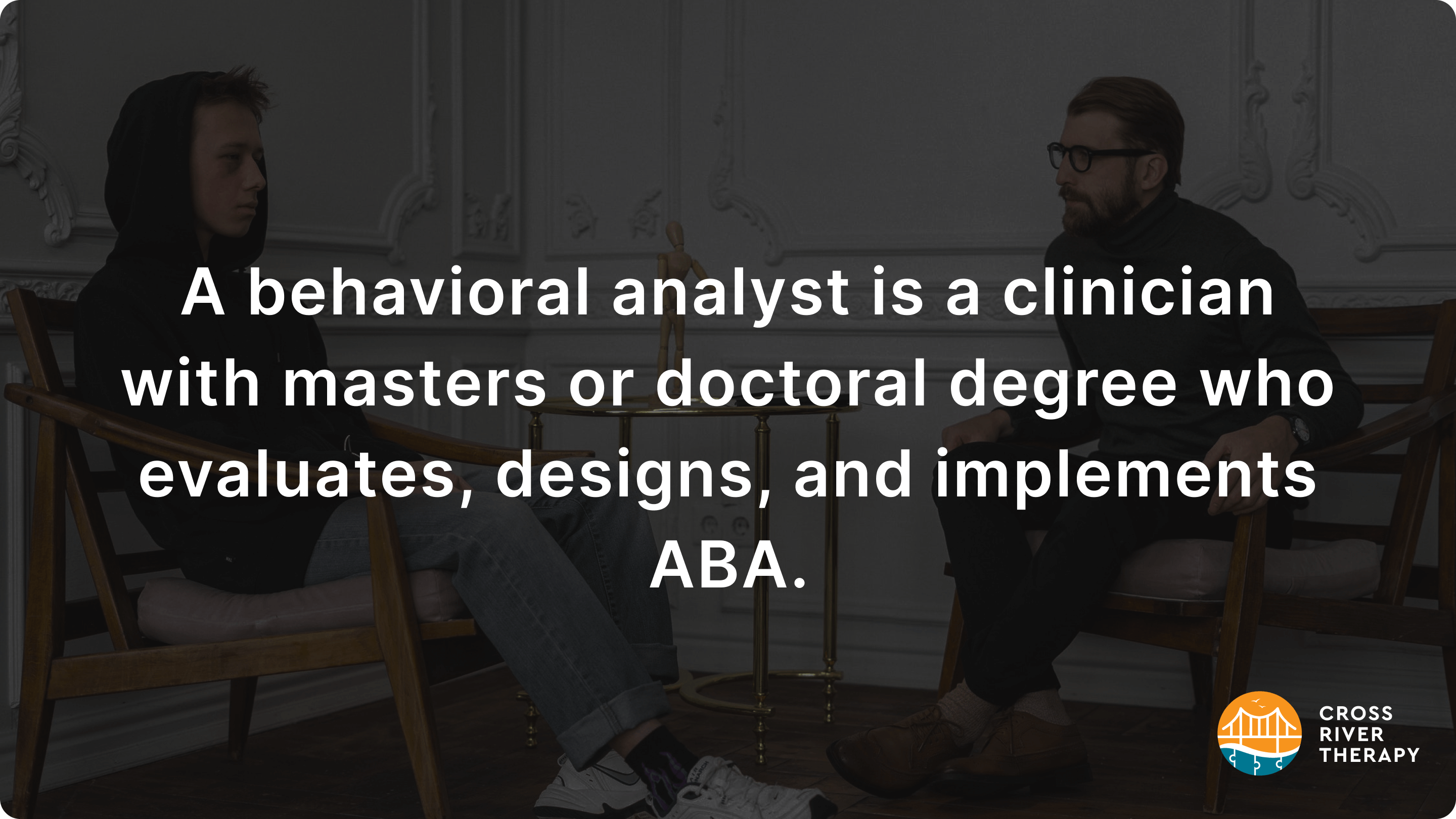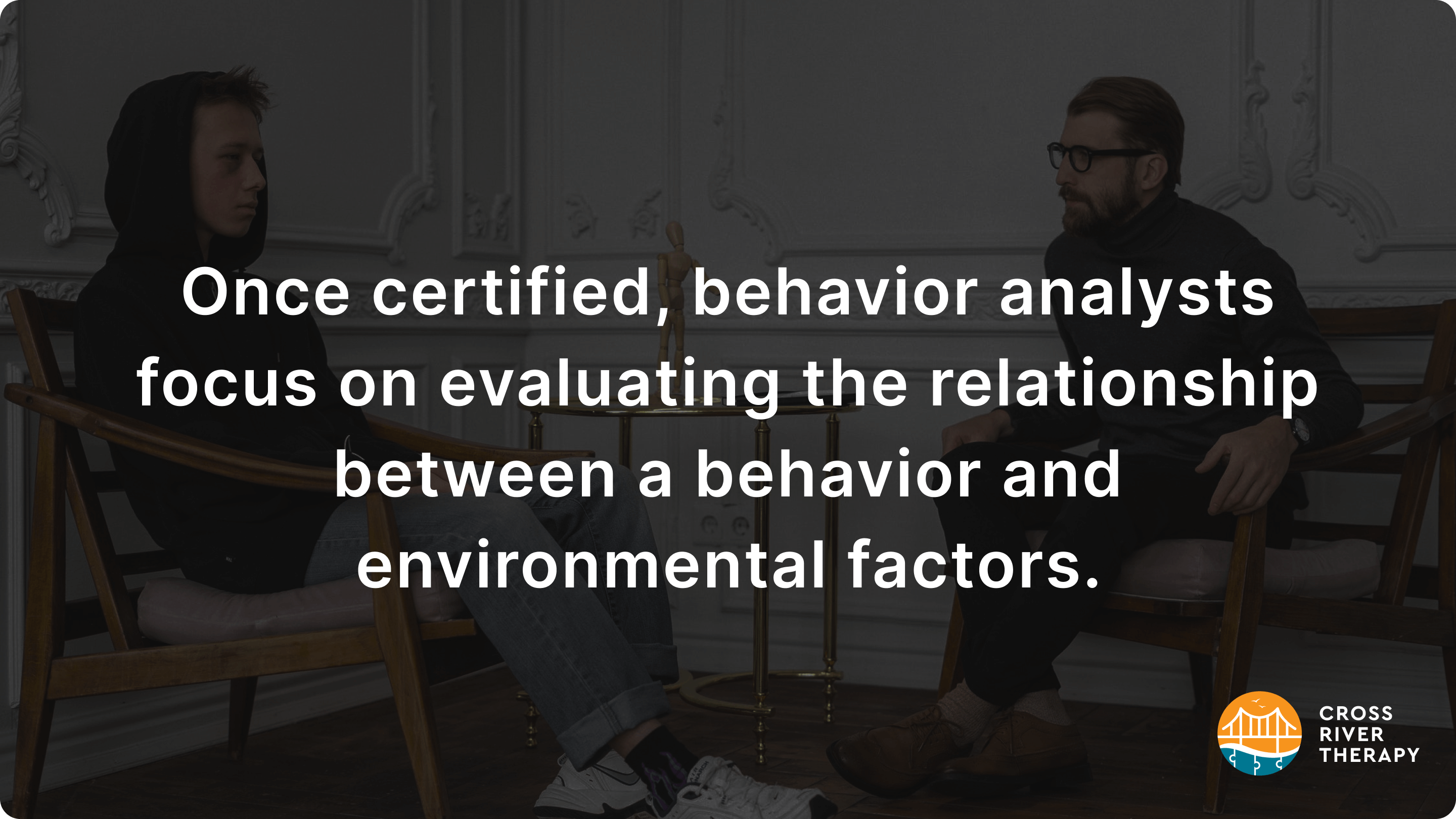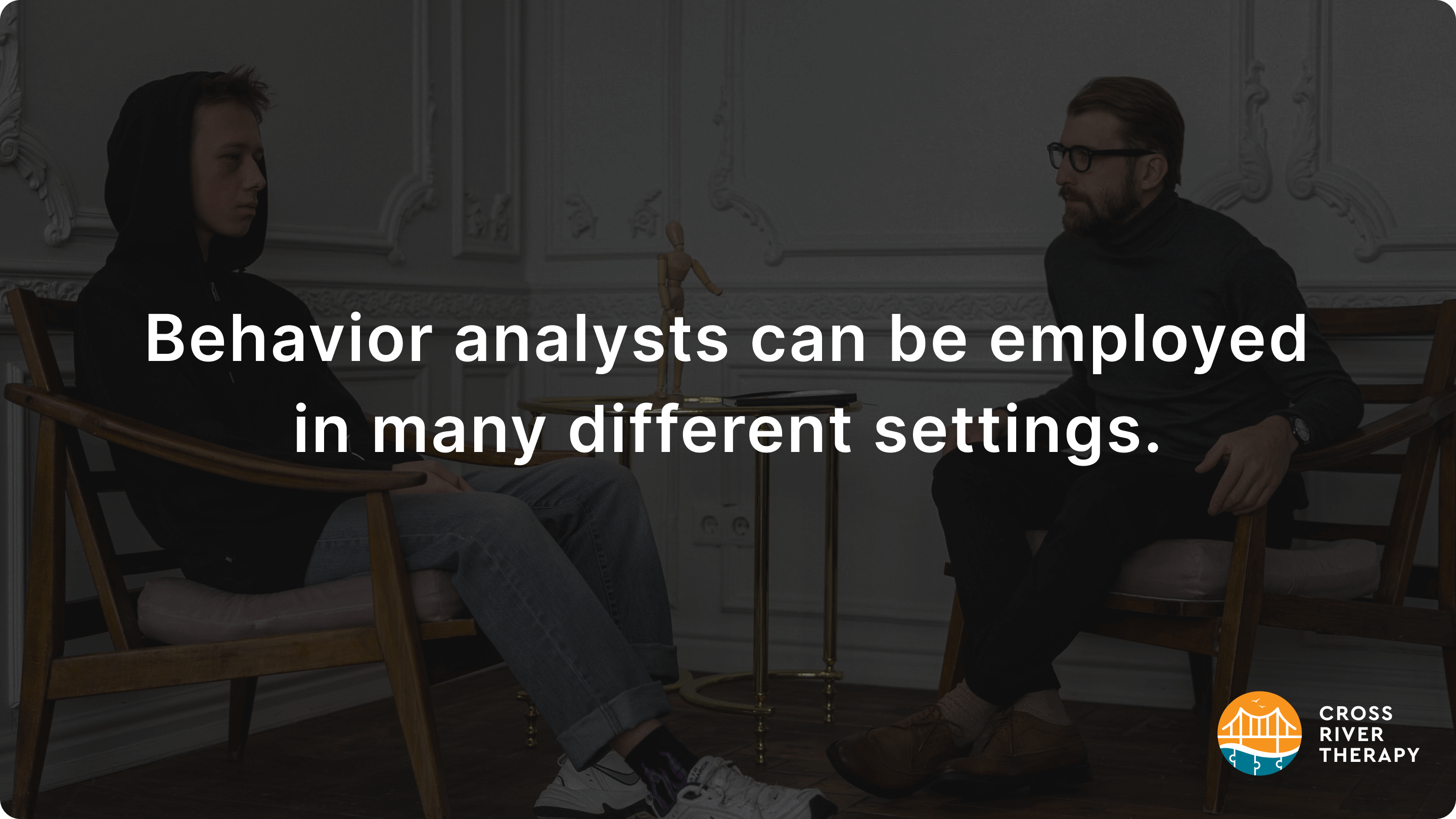What Is An Applied Behavior Analyst + What Do They Do
A behavioral analyst is a clinician with masters or doctoral degree who evaluates, designs, and implements ABA.
What Is An Applied Behavior Analyst?
A behavioral analyst is a clinician with master's or doctoral degree who must have specialized academic training, practical training, and pass a board certification exam. Behavior analysts evaluate, design, and implement individualized therapy to help children on the autism spectrum improve their skills.

What Does A Behavior Analyst Do?
Once certified, behavior analysts focus on evaluating the relationship between a behavior and environmental factors.

They apply techniques such as positive reinforcement to help their clients develop new behaviors, modify existing behaviors, and correct negative behaviors.
Behavior analysts primarily work with clients with diagnoses such as autism spectrum disorder, developmental and intellectual disabilities, or traumatic brain injuries.
They can also work in fields such as workplace safety, pedestrian and vehicular safety, health and fitness, and sports.
A Behavior Analyst’s Role in Patient Treatment
A large part of a behavior analyst's role is to develop treatment plans based on clients' individual needs. To give clients the most impactful ABA interventions, applied behavior analysts must continuously monitor and evaluate clients from session to session.
Behavior analysts have a goal of improving communication and behavior skills over time, and they accomplish that goal by continuously evaluating patients' behaviors to develop individualized treatment plans.

When ABA was first developed in the 1960s, behavior analysts would break down desired behaviors into specific components. They would then lead the patient through an activity designed to teach the component.
The patient was rewarded for successfully completing each activity, and they repeated the process many times for each of the behavior's components. The process was repeated until the patient was able to assemble all components into a whole, modified behavior.
As ABA evolved over time, the process became more lenient. Behavior analysts chose activities based on their clients' interests within their environment.
In this ABA therapy technique, there are still aspects of employing the methods of repeating and rewarding desirable behaviors, but it occurs in a more natural way.
Where Do Behavior Analysts Work?
Behavior analysts can be employed in many different settings since they can work with a variety of clients:
- Schools
- Clinics
- Group homes
- Higher education institutions
- Hospitals
- Nursing homes
- Workplaces

Behavior Analyst Skills
Behavior analysts are trained to demonstrate skills in areas such as:
- Developing treatment goals
- Creating treatment plans for clients
- Collecting data and measuring clients' progress
- Assessing clients' preferences and skills
- Evaluating environmental factors that contribute to clients' behaviors
Skilled behavior analysts are also skilled in demonstrating empathy and compassion to clients and their families, as well as building therapeutic relationships.



